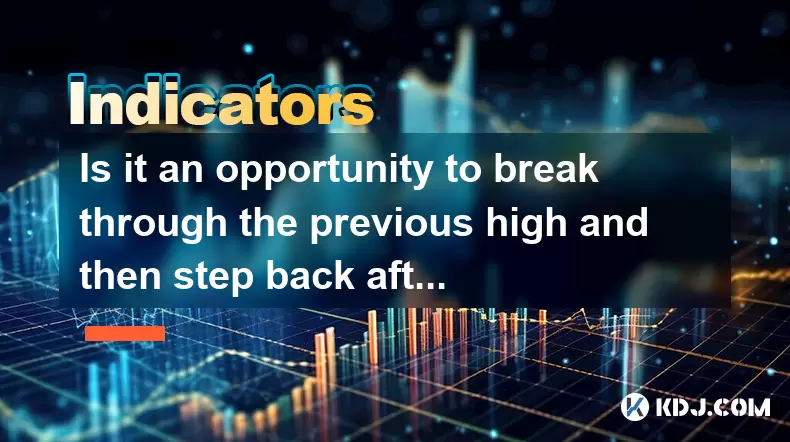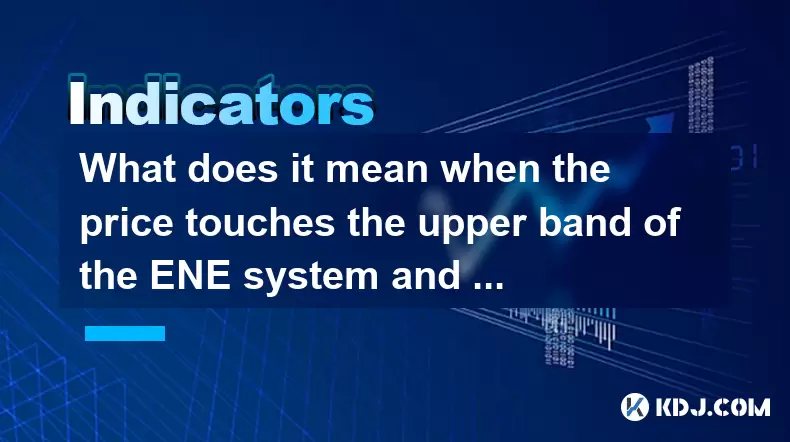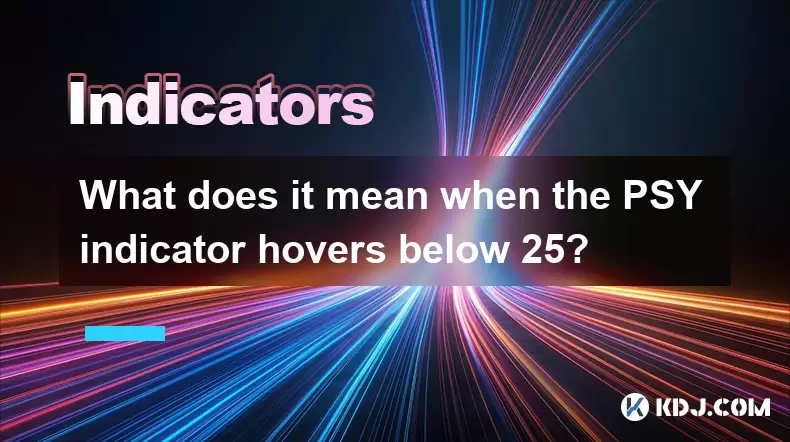-
 Bitcoin
Bitcoin $116700
0.13% -
 Ethereum
Ethereum $4229
5.18% -
 XRP
XRP $3.290
0.28% -
 Tether USDt
Tether USDt $1.000
0.01% -
 BNB
BNB $804.4
1.46% -
 Solana
Solana $181.3
1.92% -
 USDC
USDC $1.000
0.02% -
 Dogecoin
Dogecoin $0.2453
8.11% -
 TRON
TRON $0.3359
-0.82% -
 Cardano
Cardano $0.8187
2.71% -
 Hyperliquid
Hyperliquid $43.56
6.46% -
 Chainlink
Chainlink $21.22
9.48% -
 Stellar
Stellar $0.4533
0.95% -
 Sui
Sui $3.948
2.90% -
 Bitcoin Cash
Bitcoin Cash $571.0
-2.75% -
 Hedera
Hedera $0.2657
1.33% -
 Avalanche
Avalanche $24.32
2.80% -
 Ethena USDe
Ethena USDe $1.001
0.02% -
 Litecoin
Litecoin $122.2
-0.70% -
 Toncoin
Toncoin $3.440
1.95% -
 UNUS SED LEO
UNUS SED LEO $8.978
-0.09% -
 Shiba Inu
Shiba Inu $0.00001385
5.32% -
 Uniswap
Uniswap $10.94
0.24% -
 Polkadot
Polkadot $4.116
3.88% -
 Dai
Dai $1.000
0.00% -
 Pepe
Pepe $0.00001233
5.82% -
 Bitget Token
Bitget Token $4.511
0.53% -
 Cronos
Cronos $0.1572
2.50% -
 Monero
Monero $272.0
-1.82% -
 Ethena
Ethena $0.7563
17.60%
Is it an opportunity to break through the previous high and then step back after a large volume?
A cryptocurrency breaking through its previous high and pulling back with large volume may signal a buying opportunity, but careful analysis is crucial.
May 28, 2025 at 06:56 pm

Is it an Opportunity to Break Through the Previous High and Then Step Back After a Large Volume?
In the volatile world of cryptocurrencies, traders and investors are constantly on the lookout for patterns and signals that could indicate potential opportunities. One such scenario that often sparks interest is when a cryptocurrency breaks through its previous high and then experiences a pullback after a significant volume. This article delves into this phenomenon, exploring whether it presents a buying opportunity and what factors to consider.
Understanding the Breakthrough and Pullback Pattern
A breakthrough occurs when a cryptocurrency's price surpasses its previous high, signaling potential bullish momentum. Following this, a pullback is a temporary decline in price after the breakthrough. When this pullback coincides with large trading volume, it can create a complex scenario that traders need to analyze carefully.
The key to understanding this pattern lies in the interplay between price movement and trading volume. Large volume during a pullback can indicate strong market interest, which might suggest that the pullback is a healthy correction rather than a reversal of the bullish trend.
Analyzing the Breakthrough
When a cryptocurrency breaks through its previous high, it's essential to examine the context of this breakthrough. Was the breakthrough accompanied by high trading volume? A high volume during the breakthrough can validate the strength of the bullish move, suggesting that many market participants are actively buying into the trend.
Additionally, consider the market sentiment and external factors that might have contributed to the breakthrough. For example, positive news or developments within the cryptocurrency's ecosystem can drive the price upward. Understanding these factors can provide a clearer picture of whether the breakthrough is sustainable.
Evaluating the Pullback
After a breakthrough, a pullback can occur for various reasons. Profit-taking by early investors or traders who entered at lower levels is a common cause. Additionally, market corrections can occur as the price adjusts to new levels of equilibrium.
The critical aspect to focus on during a pullback is the volume. If the pullback occurs with large volume, it can be a sign that the market is testing the new high's validity. High volume during a pullback might indicate that the market is still interested in the cryptocurrency, but participants are cautious about the new price levels.
Identifying Potential Buying Opportunities
The combination of a breakthrough followed by a pullback with large volume can indeed present a buying opportunity, but it requires careful analysis. Here are some steps to consider when evaluating such a scenario:
- Assess the volume during the breakthrough and pullback: Ensure that the volume was significant during both phases. High volume during the breakthrough and pullback can indicate strong market interest.
- Examine the price action: Look for signs of support during the pullback. If the price finds support at a key level, it could indicate a good entry point.
- Analyze technical indicators: Use indicators such as moving averages, RSI, and MACD to confirm the trend and identify potential entry points.
- Consider the broader market context: Understand the overall market sentiment and any external factors that might influence the cryptocurrency's price.
Risks and Considerations
While the pattern of breaking through a previous high and then pulling back with large volume can present buying opportunities, it's not without risks. False breakouts can occur, where the price briefly surpasses the previous high but fails to sustain the move. In such cases, the pullback can turn into a more significant decline.
Additionally, market volatility can exacerbate the risks associated with this pattern. Cryptocurrencies are known for their rapid price swings, and what appears to be a buying opportunity can quickly turn into a loss if the market sentiment shifts.
Case Studies and Real-World Examples
To better understand this pattern, let's look at some real-world examples within the cryptocurrency market.
- Bitcoin (BTC): In 2021, Bitcoin experienced multiple instances of breaking through previous highs followed by pullbacks with large volume. One notable example was in April 2021, when Bitcoin briefly surpassed $64,000 before pulling back. The large volume during the pullback suggested strong market interest, and those who bought during the dip saw significant gains as Bitcoin continued its upward trajectory.
- Ethereum (ETH): Ethereum's price movements in 2021 also showcased this pattern. After breaking through $4,000 in May 2021, Ethereum experienced a pullback with substantial volume. Traders who recognized this as a buying opportunity and entered at the dip saw Ethereum reach new highs later in the year.
Tools and Strategies for Traders
Traders can use various tools and strategies to capitalize on the pattern of breaking through a previous high and then pulling back with large volume. Here are some practical approaches:
- Volume Profile: Use volume profile indicators to identify areas of high trading activity. These areas can act as support or resistance levels during pullbacks.
- Order Flow Analysis: Analyze the order flow to understand the buying and selling pressure at different price levels. This can provide insights into whether the pullback is likely to be temporary or more sustained.
- Risk Management: Implement strict risk management strategies, such as setting stop-loss orders and position sizing, to protect against potential losses if the pullback turns into a more significant decline.
- Divergence Analysis: Look for divergences between price and technical indicators like RSI or MACD. Bullish divergences during a pullback can signal potential buying opportunities.
Frequently Asked Questions
Q: How can I differentiate between a healthy pullback and the start of a bearish trend?
A: To differentiate between a healthy pullback and the start of a bearish trend, pay attention to the volume and price action. A healthy pullback often occurs with high volume but finds support at key levels, while the start of a bearish trend might see declining volume and a breakdown of support levels. Additionally, monitor technical indicators for signs of bearish divergence, which can indicate a shift in trend.
Q: Are there specific cryptocurrencies that are more likely to exhibit this pattern?
A: While any cryptocurrency can exhibit the pattern of breaking through a previous high and then pulling back with large volume, major cryptocurrencies like Bitcoin and Ethereum are more likely to show this pattern due to their high liquidity and market interest. However, altcoins can also exhibit this pattern, especially those with strong fundamentals and active communities.
Q: How long should I wait after a pullback to enter a trade?
A: The timing of entering a trade after a pullback depends on various factors, including the cryptocurrency's volatility and the overall market conditions. A common strategy is to wait for the price to show signs of stabilization or a reversal pattern, such as a bullish candlestick formation or a bounce off a key support level. Additionally, using technical indicators like moving averages or RSI can help confirm the timing of your entry.
Q: Can this pattern be used for short-term trading or is it more suited for long-term investing?
A: This pattern can be used for both short-term trading and long-term investing, depending on your trading style and risk tolerance. Short-term traders might look to capitalize on the immediate bounce after a pullback, using tight stop-loss orders to manage risk. Long-term investors, on the other hand, might see the pullback as an opportunity to accumulate more of the cryptocurrency at a lower price, holding for the long term as they believe in the underlying fundamentals.
Disclaimer:info@kdj.com
The information provided is not trading advice. kdj.com does not assume any responsibility for any investments made based on the information provided in this article. Cryptocurrencies are highly volatile and it is highly recommended that you invest with caution after thorough research!
If you believe that the content used on this website infringes your copyright, please contact us immediately (info@kdj.com) and we will delete it promptly.
- Trump, Crypto Vehicle, and WLFI Tokens: A New York Minute on the Latest Buzz
- 2025-08-10 00:30:12
- Wheat Penny Fortune: Unearthing Valuable Coins in Your Pocket Change
- 2025-08-10 00:35:19
- Dogecoin, PENGU, and Remittix: A New York Minute in Crypto
- 2025-08-10 01:10:12
- Ozark AI: Investment Opportunities and Analyst Projections for 2025
- 2025-08-10 01:15:17
- Cryptocurrencies 2025: Top Buys and Market Predictions
- 2025-08-10 01:20:12
- Pendle's Price Jump: Riding the Wave of Market Sentiment
- 2025-08-10 01:25:11
Related knowledge

What does it mean when the price is trading above the SAR indicator but the red dots are densely packed?
Aug 09,2025 at 11:49pm
Understanding the SAR Indicator and Its Visual SignalsThe SAR (Parabolic Stop and Reverse) indicator is a technical analysis tool used primarily to de...

What does it mean when the MACD histogram continues to shorten but the price reaches a new high?
Aug 09,2025 at 09:29pm
Understanding the MACD Histogram and Its ComponentsThe MACD (Moving Average Convergence Divergence) indicator is a widely used technical analysis tool...

What does it mean when the Triple Moving Average (TRIX) turns downward but the price doesn't fall?
Aug 09,2025 at 12:42pm
Understanding the Triple Moving Average (TRIX) IndicatorThe Triple Moving Average, commonly known as TRIX, is a momentum oscillator designed to filter...

What does it mean when the price touches the upper band of the ENE system and then falls back?
Aug 10,2025 at 12:42am
Understanding the ENE Indicator StructureThe ENE (Envelope) indicator is a technical analysis tool used in cryptocurrency trading to identify potentia...

What does it mean when the Williams' oscillator repeatedly hits bottoms but fails to rebound?
Aug 09,2025 at 09:28am
Understanding the Williams %R OscillatorThe Williams %R oscillator, developed by Larry Williams, is a momentum indicator used in technical analysis to...

What does it mean when the PSY indicator hovers below 25?
Aug 10,2025 at 01:14am
Understanding the PSY Indicator in Cryptocurrency TradingThe PSY indicator, also known as the Psychological Line indicator, is a momentum oscillator u...

What does it mean when the price is trading above the SAR indicator but the red dots are densely packed?
Aug 09,2025 at 11:49pm
Understanding the SAR Indicator and Its Visual SignalsThe SAR (Parabolic Stop and Reverse) indicator is a technical analysis tool used primarily to de...

What does it mean when the MACD histogram continues to shorten but the price reaches a new high?
Aug 09,2025 at 09:29pm
Understanding the MACD Histogram and Its ComponentsThe MACD (Moving Average Convergence Divergence) indicator is a widely used technical analysis tool...

What does it mean when the Triple Moving Average (TRIX) turns downward but the price doesn't fall?
Aug 09,2025 at 12:42pm
Understanding the Triple Moving Average (TRIX) IndicatorThe Triple Moving Average, commonly known as TRIX, is a momentum oscillator designed to filter...

What does it mean when the price touches the upper band of the ENE system and then falls back?
Aug 10,2025 at 12:42am
Understanding the ENE Indicator StructureThe ENE (Envelope) indicator is a technical analysis tool used in cryptocurrency trading to identify potentia...

What does it mean when the Williams' oscillator repeatedly hits bottoms but fails to rebound?
Aug 09,2025 at 09:28am
Understanding the Williams %R OscillatorThe Williams %R oscillator, developed by Larry Williams, is a momentum indicator used in technical analysis to...

What does it mean when the PSY indicator hovers below 25?
Aug 10,2025 at 01:14am
Understanding the PSY Indicator in Cryptocurrency TradingThe PSY indicator, also known as the Psychological Line indicator, is a momentum oscillator u...
See all articles

























































































